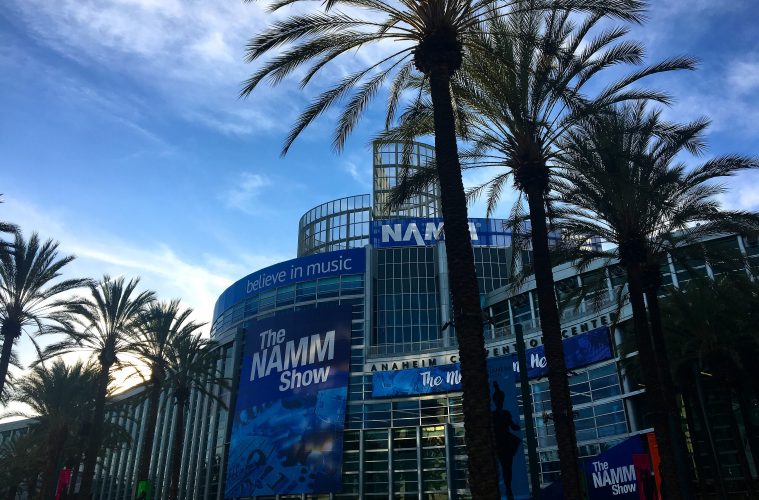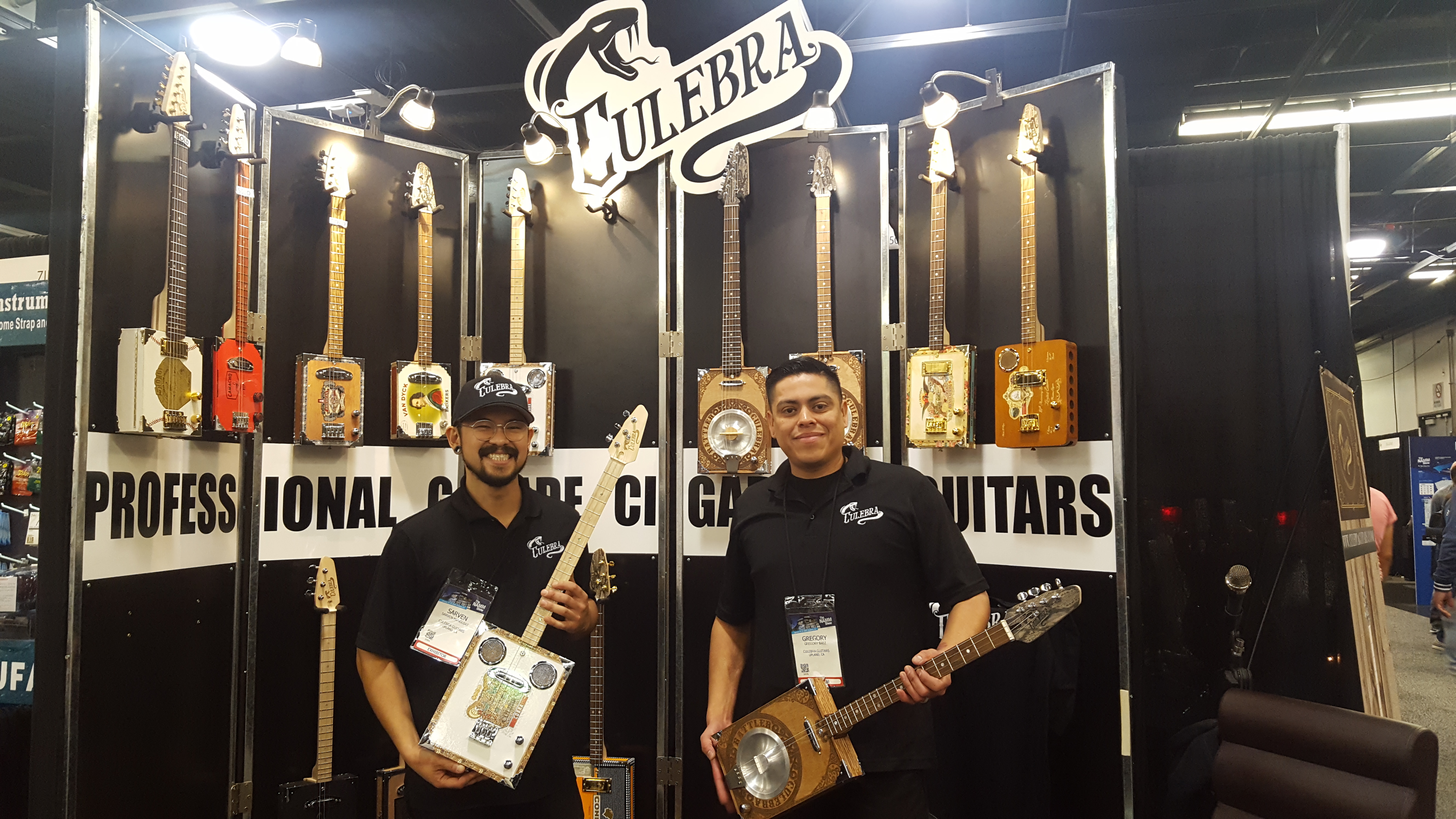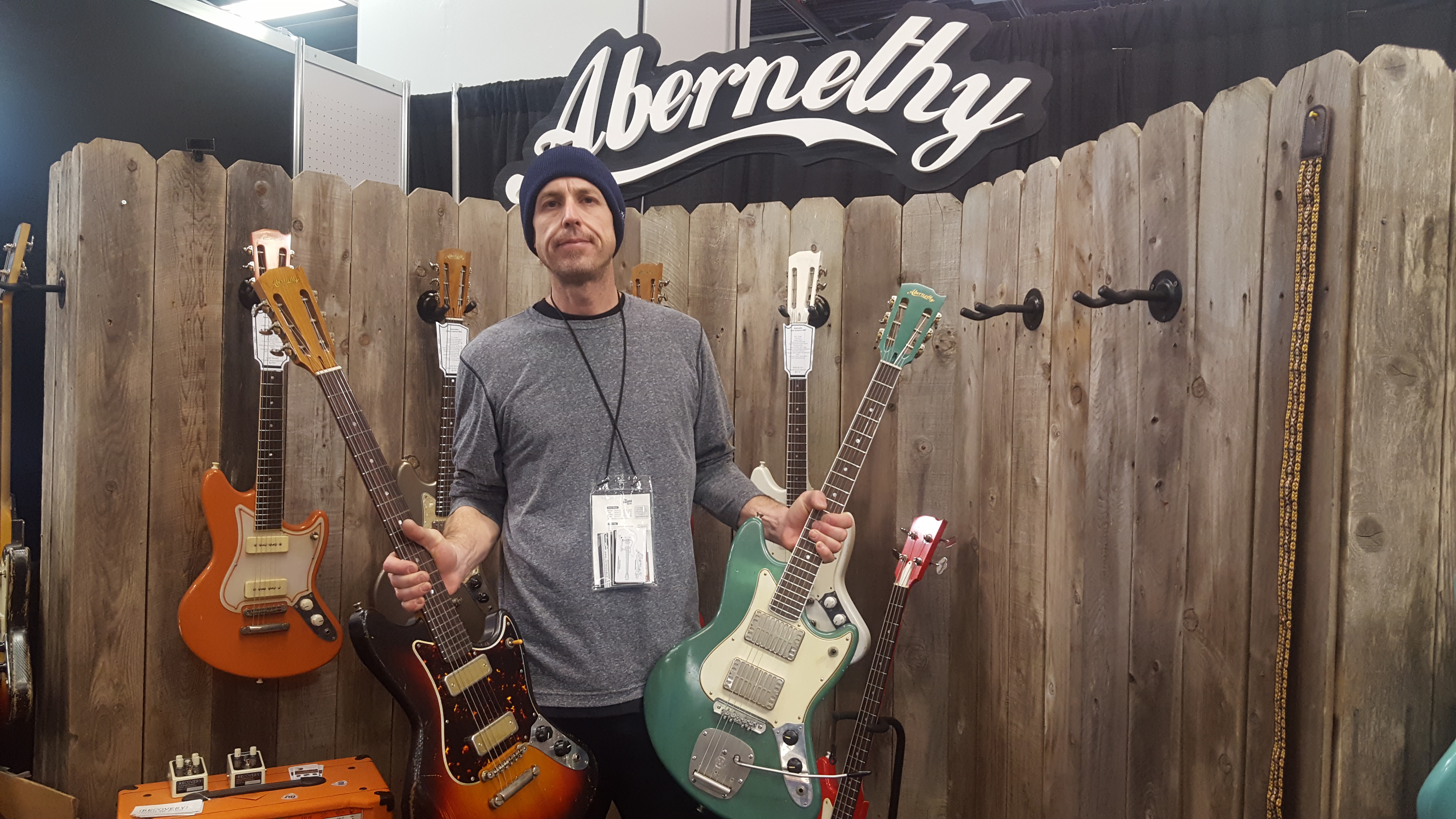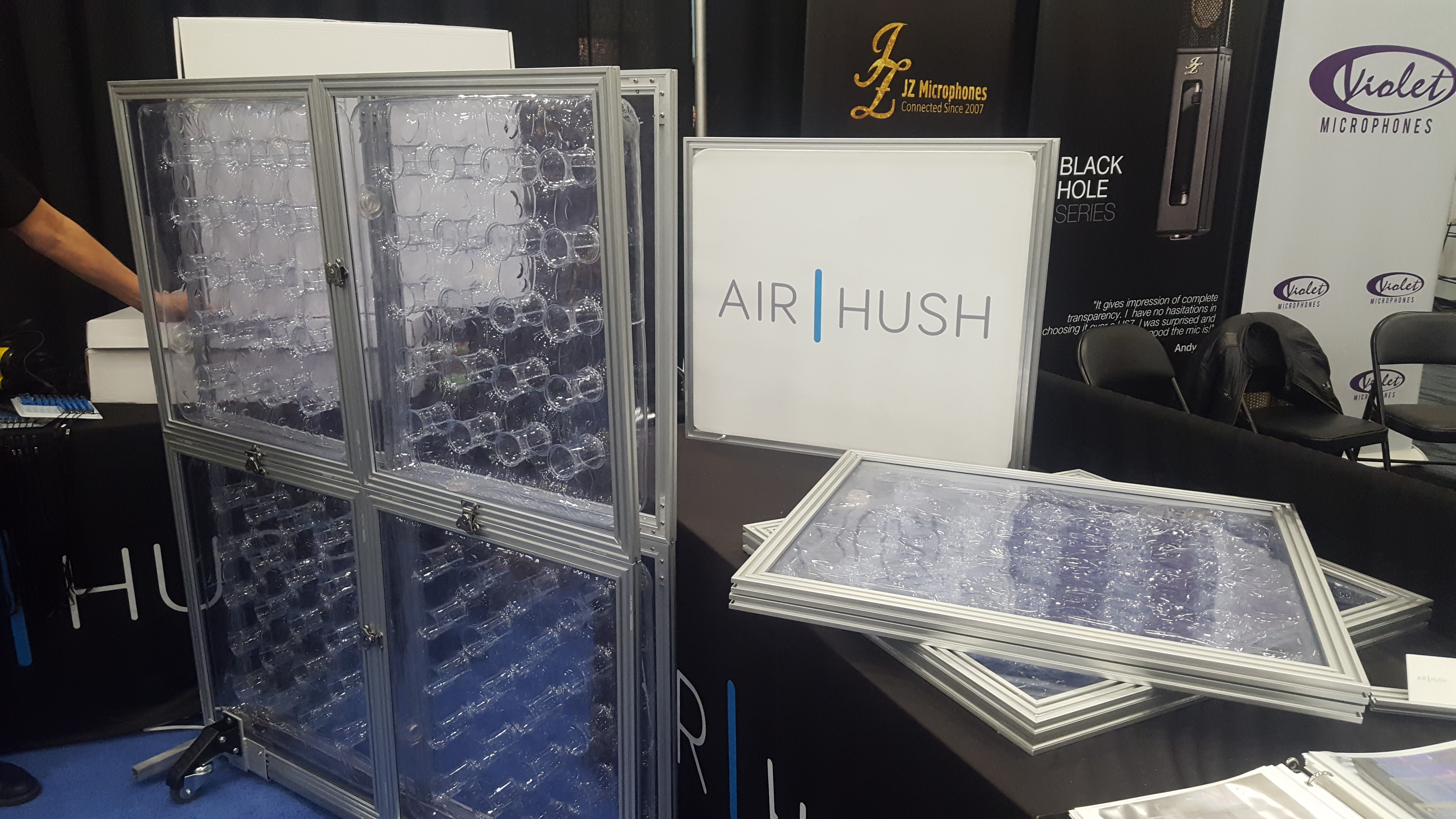By Amanda Mullen and Anthony Vargas
Each NAMM Show welcomes dozens of first-time exhibitors, from brand-new startups to passion projects for MI industry stalwarts to established brands looking to expand into new markets. Although the big-name manufacturers dominate the bulk of NAMM Show coverage, these smaller companies often have their own intriguing stories to go along with their groundbreaking products. That’s why, each year, The Retailer spotlights a handful of standouts among the NAMM Show’s new class. This year, we present eight more.
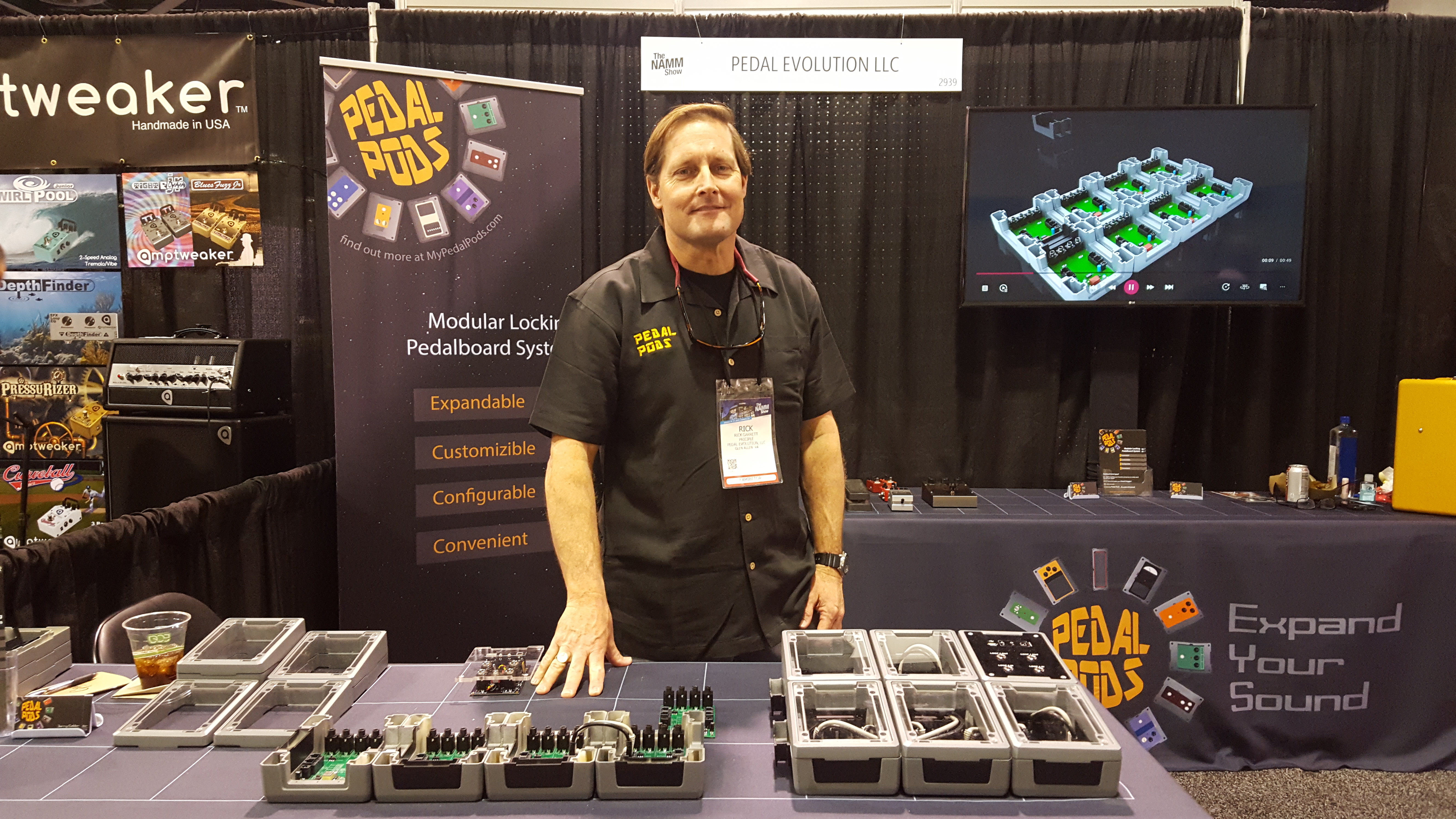
Pedal Pods
Website: mypedalpods.com
Facebook: @pedalpods
Those looking for a unique take on a well-known MI accessory should make a point of checking out Pedal Pods. Based out of Richmond, Va., Pedal Pods was created by Jerry Calder, a consumer electronics industry insider, and Rick Garrett, a musician who was frustrated with the limitations of the average pedalboard. “I was on the basement floor rewiring my pedalboard,” Garrett recounted. “I had a new effects pedal I wanted to add, and it just would not fit. I was sitting there, frustrated, then I noticed a bag of Legos nearby that my daughter had left on the floor. At that moment, the lightbulb went off. I thought, what if we built a pedalboard out of interconnected pieces? I then pitched the idea to Jerry, and he got started on the mechanics and design.”
That’s the story behind the evolution of Pedal Pods, a modular, powered, locking pedalboard system. “Our system provides power and audio for each pedal location,” Garrett said. “Musicians now have the flexibility to make their pedalboards wider, deeper, smaller or taller in just minutes. There are two separate audio loops that you can combine with a switch for easy transitioning between different types of amplifiers. Each pod provides isolated power and selectable, regulated voltage — nine to 18 volts per location.” But what really makes Pedal Pods unique is that users can reshape their boards at any time. “You can make it smaller for a small stage or bigger for a larger venue using a Phillips screwdriver. Also, whenever you want to add additional pedals, you don’t have to rewire your board all over again or buy a bigger board. You just add a pod for each new pedal.”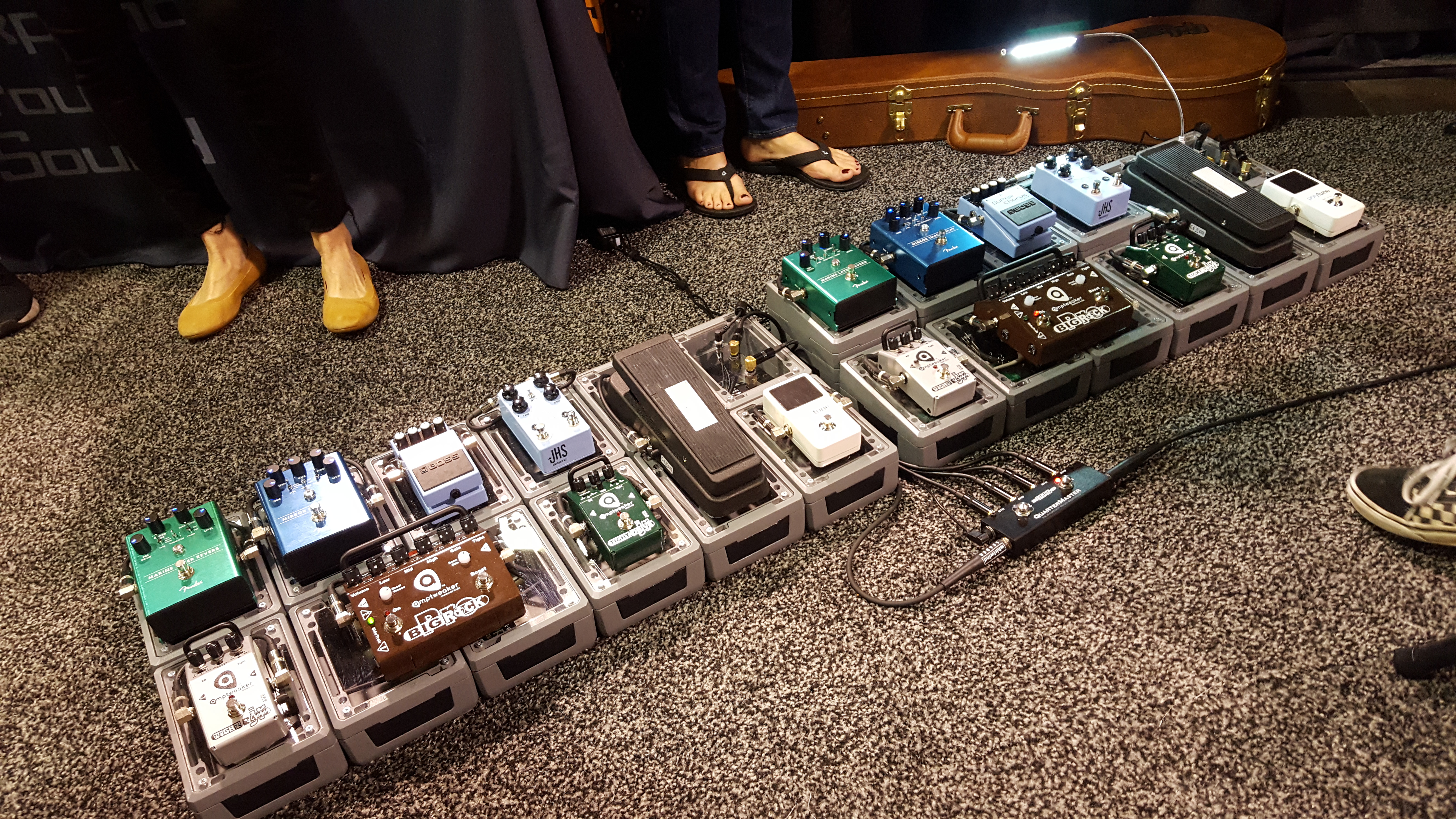
Thanks to the flexible cabling capabilities, Pedal Pods users can route the wiring/signal path in any direction they choose. “We employ Cat6 cable inside the pods that takes the signal and power from pod to pod,” Garrett explained. “And through the routing channels, you can wire in any direction. For example, if you have a boost pedal and you want to add other pedals to that boost circuit, you can route in any direction to incorporate other pedals in that boost loop.”
The wiring and power are housed inside the pods giving users a neat, decluttered layout. With that sort of convenience, it’s no surprise that Pedal Pods attracted positive attention at The NAMM Show. In fact, on day one of the show, the brand was listed in Adorama.com’s Top 10 most exciting announcements of the show — an impressive feat for a first-time exhibitor. “We are pleased with all of the positive feedback we’ve received,” Garrett said. “We’ve gotten some great suggestions too, which we will strongly consider going forward.” Calder and Garrett are aiming to have Pedal Pods available this April.

Flint Percussion
Website: flintpercussion.co.uk
Facebook: @flintdrums
U.K.-based Flint Percussion managed to rise above the drum hall din thanks to its innovative line of lightweight, high-tension snare drums. The company, which has been around since 2005, is helmed by mother-and-son team Julie and Paul Holding. The Holdings explained that their idea to create a much lighter snare drum came from Julie’s daughters’ interest in playing the snare for pipe and drum, and her concern, as a parent, about the effect the weight of the heavy snares would have on her daughters’ health.
The Holdings took a look at the design of a typical snare drum and determined that much of the excess weight came from the tensioning system. “So, we’ve developed this tensioning system now which is through the shell,” Paul Holding explained. “We call it a Suspended Shell. All of the drums that Flint Percussion makes use this design. The shell is held in suspension by the drum skins. Nothing touches the drum skin externally. These drums are fully resonant, because nothing touches the shell externally.”
Flint Percussion currently offers two varieties of marching snare drum: the Super XTS 2 Pipe Band Snare Drum for traditional pipe and drum, which weighs 4.2 kilograms (about 9.3 lbs.) and the Drum Corps Snare for American-style drum corps, which weighs 4.1 kilograms (about 9 lbs.). The company also offers a lightweight harness for both models.
“The pipe band snare is fitted with two snares. That’s one under the batter head, and one under the bottom, the resonant head. They are fixed because pipe band snares these days are only ever played with the snares on,” Holding described. “The drum corps snare drum has two snares, again. We have a fixed internal snare on the bottom skin, and we have a throw-offable external snare. So, the drum can be played either half snare with just the internal snare, or we can put the throw lever up, and that can be played with full snare.”
In addition, Flint Percussion offers the Reggae/Ska Snare Drum for drum kits. “The reggae shell is a one-piece, solid-aluminum shell, fully suspended on a 12-lug snare drum,” Holding said. “The reggae shell itself is piccolo, that’s 3.5-inch deep. Both the butt plate and the snare throw, our own unique snare throw, are fixed to the bottom hoop. Once again, nothing touches the shell.” He added, “We sent an example of this drum over to the world’s most successful reggae band ever, that being the U.K. band UB40. Their drummer, Jimmy Brown, tried it out and said he will never go back to any other snare. This is the best he’s ever heard.” According to Holding, The NAMM Show crowd was very receptive to its product line. “More than half of the people we’ve spoken to [said], ‘I’ve got a bad back because I was forced to carry these heavy drums when I was younger. I wish that I’d had this drum then.’ So, OK, the day for them has passed, but the day is here now for the next generation. So hopefully, the days of drummers developing bad backs with heavy drums might be coming to an end.” The Holdings added that their company is very interested in the U.S. market, and as an incentive for U.S.-based dealers, they’re offering the Super XTS 2 Pipe Band Snare Drum and the Drum Corps Snare for $650 each.
Culebra Guitars
Website: culebraguitars.com
Instagram: @culebraguitars
At The NAMM Show, you’re likely to find guitars of just about every variety, but cigar-box guitars remain a niche item for most manufacturers. However, one new upstart, Culebra Guitars, is seeking to dominate that niche with its multiple lines of production-model cigar-box guitars, as well as its custom offerings.
Culebra Guitars draws heavily on its name — the Spanish word for “snake” — for inspiration. According to Greg Baez, “Culebra has many meanings. The biggest meaning for us is that a snake sheds its skin, and we felt like we were at that part of our lives. The whole reason the snake sheds its skin is for growth, and they never stop. It’s something that means a lot to us, and we really want to grow this company into something that’s just going to blow up.” That inspiration extends to Culebra’s entire product line; all models have names inspired by snakes, and feature accents like laser-etched snake scales and matching headstocks modeled after the silhouette of a coiled boa constrictor.
At this year’s show, Culebra Guitars demonstrated its Cobra and Rattler production-model cigar-box guitars. “The Cobra [is named for] its wider body and its really slim profile, like a cobra with its crown extended,” Baez explained. “We’re doing a single-coil lipstick pickup, and we do all of our frets, we do all of our inlays. The frets are Dunlop, and then the bone nuts, we’re shaping all those ourselves. We’re using maple and walnut woods, and our boxes are Spanish cedar. And then the graphics were all done in-house.”
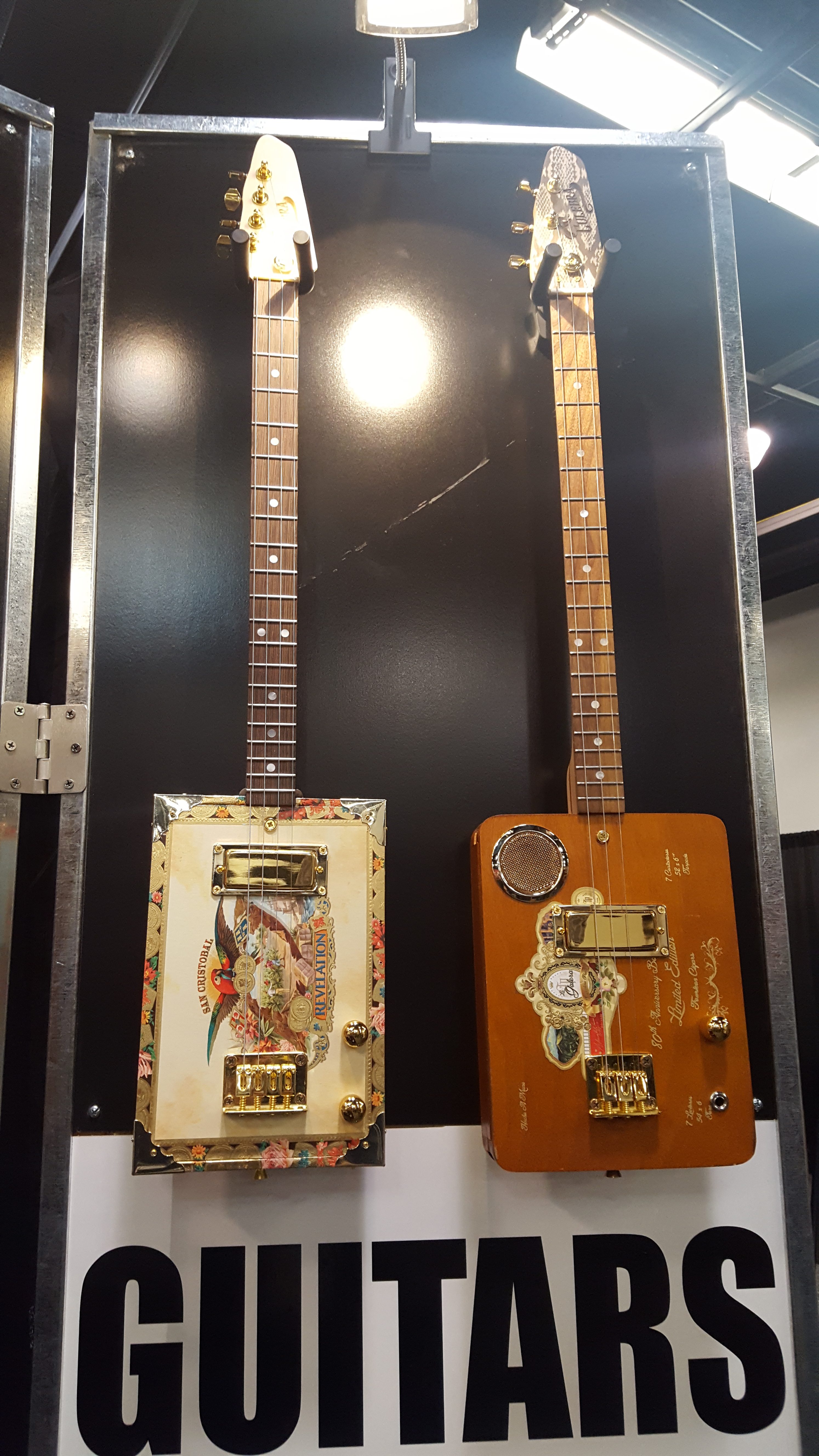 He continued, “The Rattler has a beautiful aluminum cone that’s spun on a lathe. It’s named the Rattler because of that certain sound it has. It has resonator strings, it has that resonator cone. It reminds us of a Western feel. All of the artwork was done in-house, and we laser engrave scales on the side to give it that diamondback feel of a rattlesnake.” The company will also soon debut a third production model, the Mamba. The production models will be available in both righty and lefty configurations.
He continued, “The Rattler has a beautiful aluminum cone that’s spun on a lathe. It’s named the Rattler because of that certain sound it has. It has resonator strings, it has that resonator cone. It reminds us of a Western feel. All of the artwork was done in-house, and we laser engrave scales on the side to give it that diamondback feel of a rattlesnake.” The company will also soon debut a third production model, the Mamba. The production models will be available in both righty and lefty configurations.
Culebra Guitars decided to roll out its production models to bring some consistency to the world of cigar-box guitars. “You love your favorite artists not only for their lyrics, or their performance, but the way they sound, the instruments they play. And when that influences you, you go out and buy that same instrument. You want to be like them. So that was something that we really wanted to do with these guitars. We wanted to have a consistency of sound, of feel, of the way it looks,” Baez said. “We’re always going to continue building traditional cigar boxes, but the thing is, we have no control over how those boxes are going to sound until they’re built. With our production line, we know how it’s going to sound, we know how it’s going to look and we know how it’s going to feel. And all three of those really matter for any type of instrument you’re playing.”
According to Baez, the decision to exhibit at The NAMM Show was a good one for Culebra Guitars. “I’ve been here as a consumer, but I’ve never been here as an exhibitor, and as this experience is going, I think we’re going to be at NAMM for years to come, because it’s been great for us,” he shared. “We’ve gotten nothing but positive feedback. People here are great.”
Abernethy Guitars
Website: abernethyguitars.com
Instagram: @bottomlineguitars
The NAMM Show floor is the proving ground for many talented luthiers who have decided to break out on their own and start their own guitar companies. These companies are often the passion projects of talented craftspeople who have invested years of time into learning the finer points of guitar making. For Justin Abernethy, founder of Abernethy Guitars, that passion and skill was evident in the guitars on display in his booth.
“I’m personally three hours up the coast [from Anaheim] in Guadalupe, Calif. Just a small, one-person shop in my backyard,” Abernethy said. “I’m now doing basically everything, all the painting, all the rough millwork. I’ve spent a lot of real, intimate time fixated on each one of these guitars.” According to Abernethy, The NAMM Show was the perfect opportunity to get his guitars into the hands of the public and get some exposure in the MI industry. “I’ve been doing everything direct and using Reverb, but I’m looking for some dealers, and just really trying to get some exposure and some feedback. It’s nice to see and hear what people want, what people like, where I went right, where I went wrong. I’ve really been blown away, because everybody really seems to dig ‘em, which I hoped they would, but you just never know.”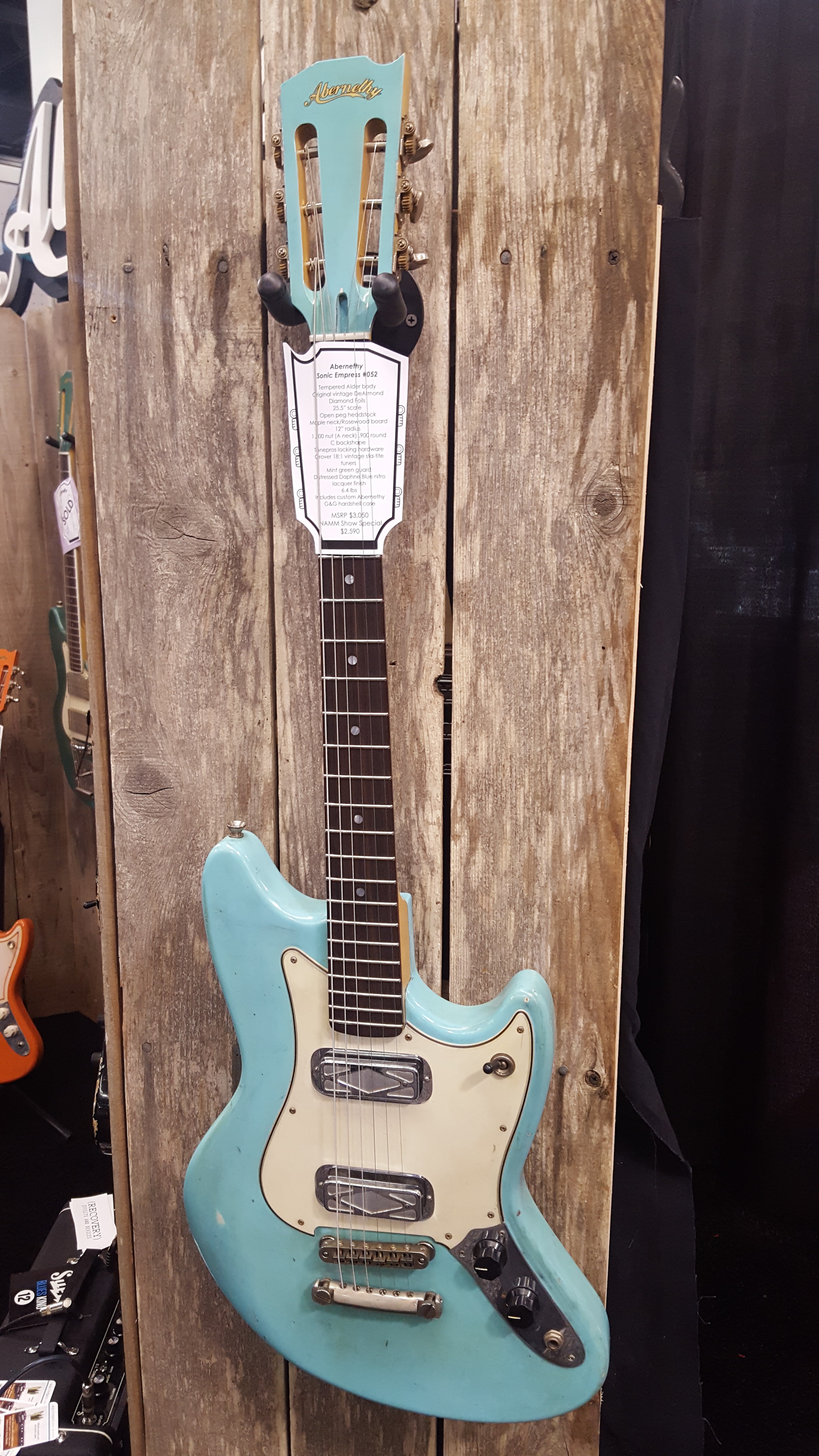
Abernethy has been building and repairing guitars since he graduated from high school, and was mentored for large parts of his career by legendary luthier Gene Baker. Abernethy’s own background as a luthier includes working for Ernie Ball, National Resophonic and Fine Tuned Instruments, as well as some time in the Premier Builders Guild making guitars for Saul Koll, Giffin, Fano and Jason Z. Schroeder. After parting ways with the Premier Builders Guild, Abernethy decided to start his own company, culminating in his NAMM Show debut this year.
“The model I have at the show is called the Sonic Empress,” Abernethy described. “It’s a 25.5-inch scale based on my favorite guitars from the ‘60s Fender era. A lot of the student models had a tiny neck, but with a really short scale, so I’m taking that feel to a full 25.5-inch scale. I offer lots of different options, neck sizes, colors. People are really digging the feel, the sustain of them. Everybody’s saying that they feel great, they’re some of the best guitars they’ve felt, which is kinda blowing my mind.”
For Abernethy, exhibiting at The NAMM Show was well worth the investment. “I’m really glad I decided to do it because the exposure’s been priceless,” he shared. “This day and age, everything’s Instagram and Facebook, and it’s just really nice to meet some of these people that I’ve been friends with for a really long time. I feel like I know them, and to be able to find this camaraderie through guitars — it’s just been really great.”
AirHush
Website: airhush.com
Facebook: @airhush
The NAMM Show is loud. With so many companies demonstrating their latest instruments and speaker systems, often competing with each other to be heard, it can be just about impossible to escape all the noise. However, while so many companies were trying to be the loudest, AirHush took the opposite approach. Its inflatable, modular noise-attenuation system offered a way to tame excess noise in just about any space.
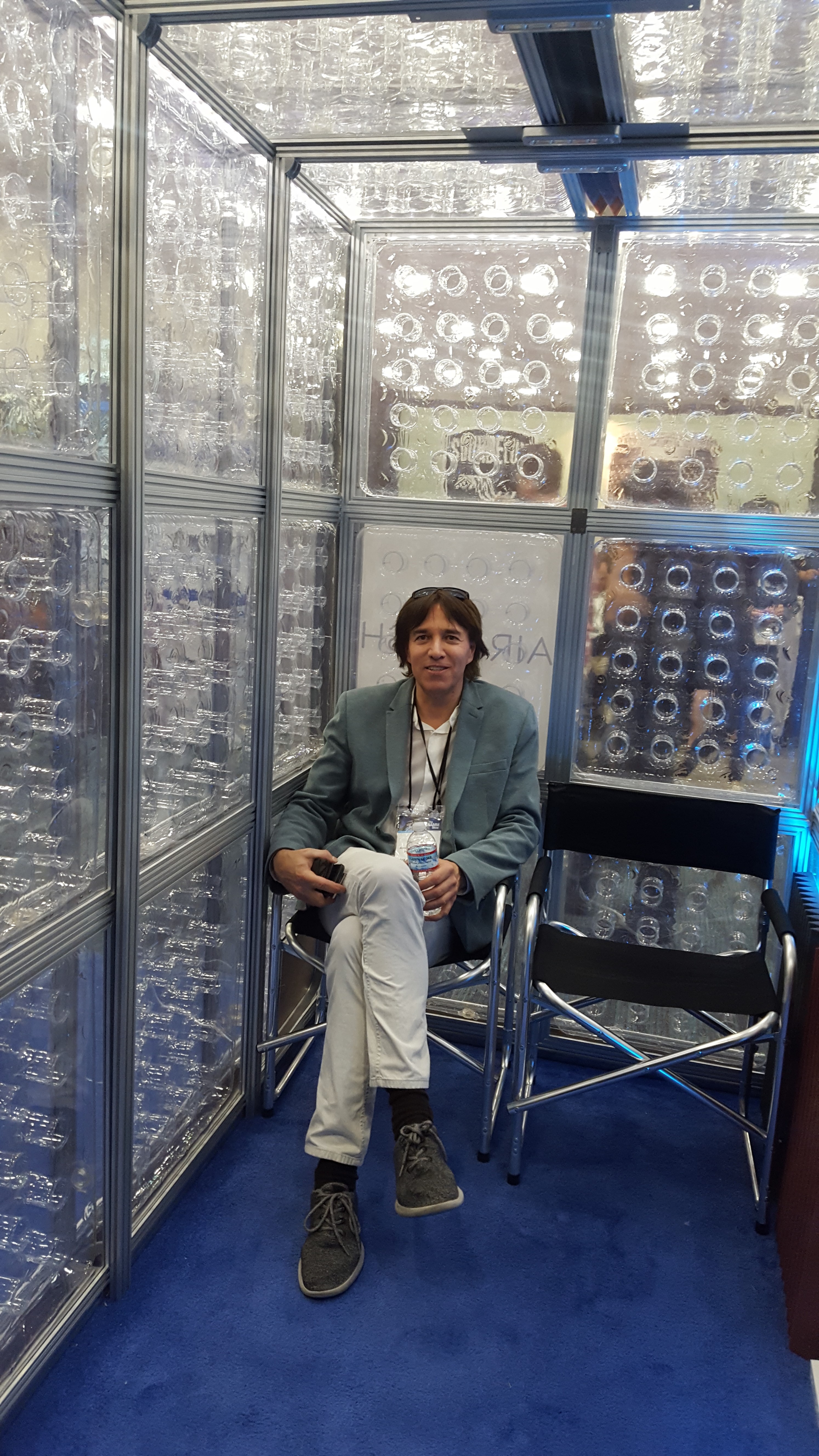 The inventor behind AirHush, Jim Pilaar, invited us inside a booth made of AirHush panels while we discussed this innovative new product. “We’ve taken inflatables and sound-attenuation materials and put them together to create transportable, storable, shippable, see-through building blocks. So, you have an Erector Set-style system that you can put together to create inflatable structures like a vocal booth or an interview room, to gobos to amp cubes to anything else that you can imagine.”
The inventor behind AirHush, Jim Pilaar, invited us inside a booth made of AirHush panels while we discussed this innovative new product. “We’ve taken inflatables and sound-attenuation materials and put them together to create transportable, storable, shippable, see-through building blocks. So, you have an Erector Set-style system that you can put together to create inflatable structures like a vocal booth or an interview room, to gobos to amp cubes to anything else that you can imagine.”
Pilaar drew inspiration for the AirHush system from his own life. A musician himself, Pilaar came up with the idea for AirHush when he and his son began playing music together in the basement of their family home. “We wanted to make music together in the basement in a crowded part of San Francisco, and I went out to try and find a [soundproofing] solution, and nobody could propose anything that made any sense,” he recalled. “Acoustic foams are fine for taking the high energy out of a room, but they don’t actually block sound. And as my professor friend says, you can’t build an aquarium with sponges. You need to first block the sound, and then you can treat a room.”
Pilaar was already familiar with inflatables, owing to years spent trekking in the Himalayas, where the quality of inflatable shelters and rafts could mean the difference between life and death. He was also familiar with experimental polymers thanks to a stint as a consultant for a Japanese biotech company. So Pilaar decided to combine his knowledge of inflatables and experimental materials into a solution that would let him and his son play music together without drawing the ire of the neighbors. This solution evolved into AirHush’s modular panel system.
“We’re achieving STCs (Sound Transmission Coefficient) of approximately 38.5 to 38.7,” Pilaar described. “We’ve had readings from 34 to 40 STC, which isn’t [that] high compared to some bunker-like technologies, but it’s actually as good as a university classroom wall. With the native AirHush panel, we’re getting about .2 NRC (Noise Reduction Coefficient). And when you combine it with standard acoustic absorption foams, you’re getting like .85 NRC.”
Pilaar imagines the AirHush system can be used in a variety of ways, from soundproofing existing spaces to creating individual soundproof booths within larger spaces. “There’s all kinds of opportunity to split up space, but in a way that still keeps you part of the flow, and for supervisory reasons, you’re not in a lot of small, closed-off rooms,” he said. “My wife’s a teacher, and she wants an X made of AirHush panels to be able to have different pods of students, but be able to supervise them. Then for music schools, people have come here and said, ‘We have a beginning bassist here and a beginning violinist there and a beginning drummer there, and it’s kind of painful.’ But if you can provide a little more acoustic privacy, then people can relax and maybe practice a little more than they would if they’re being listened to by too many others.” He added, “The whole world comes to NAMM to find out what’s going on, and we’re just really fortunate to be able to tell everybody about a new way to be creative and effective and efficient with your space and your time.”
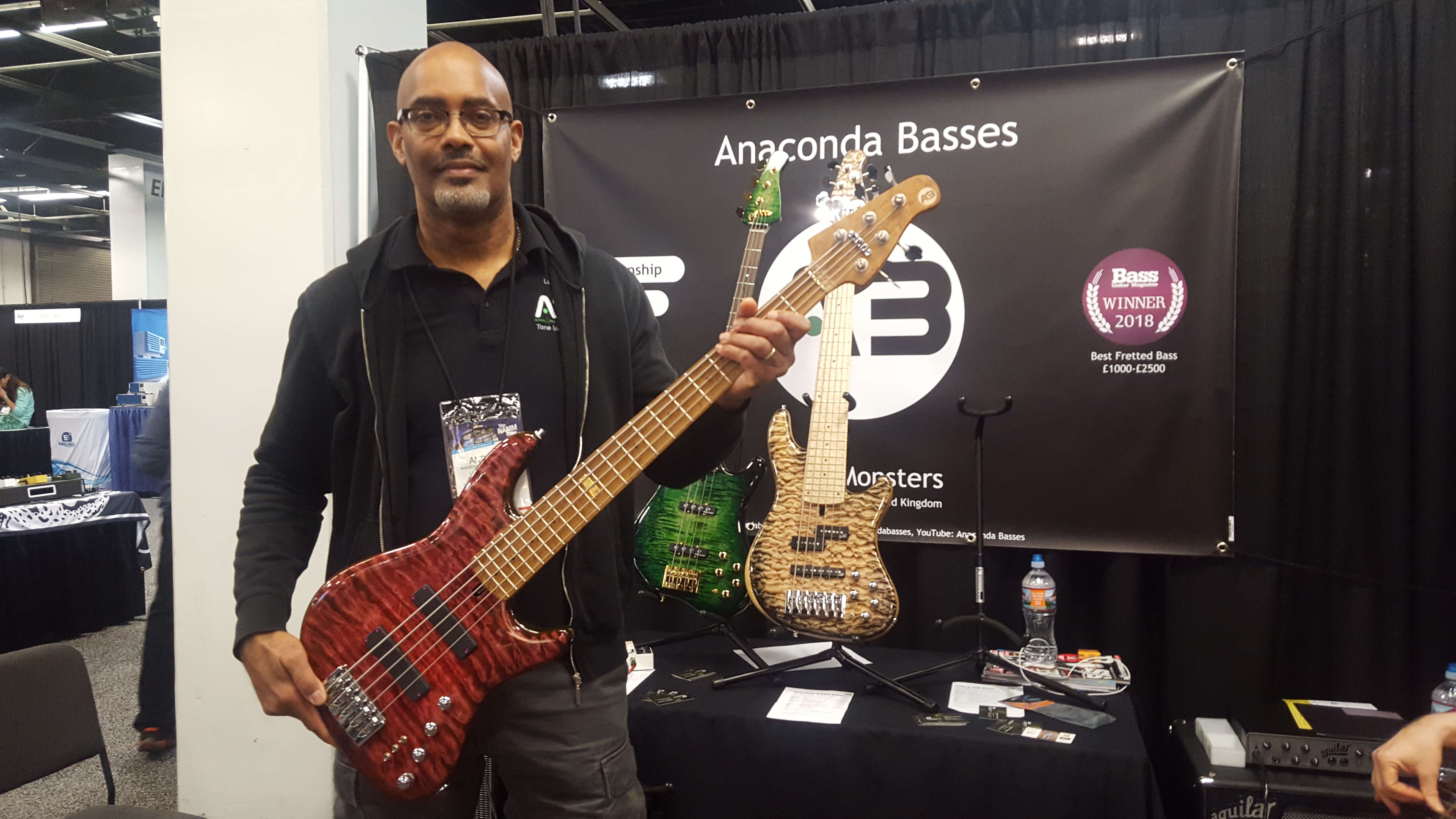
Anaconda Basses
Website: anacondabasses.co.uk
Instagram: @anacondabasses
Anaconda Basses has received plenty of attention from the U.K. market since the company’s inception, consistently receiving 10-out-of-10 reviews from Bass Guitar Magazine for both sound quality and build quality, and even winning Best Fretted Bass of 2018 in the £1,000 to £2,500 category in the magazine’s January 2019 issue. The company was started by Andrew Taylor-Cummings and became a full-time venture at the end of 2013, when he decided he wanted to pursue his passion for musical instruments in a full-time capacity. Taylor-Cummings spent his years as a bass player searching for “the Holy Grail” of instruments — always on the lookout for better tone, better sustain and the like. With Anaconda Basses, he’s been able to create the quality of instruments that he was looking for as a musician.
Given Anaconda Basses’ success back at home, the company decided to head to The NAMM Show this year to expand its presence and to show off its instruments to U.S. vendors. “I’ve had a lot of guys say to me, ‘We’ve seen your YouTube channel. We love the way your basses look and sound. When are you coming to the U.S.?’ So, I figured you have to take that step sometime,” said Taylor-Cummings. He added that taking that step was no easy feat. “There are a lot of costs involved, but it has been incredibly rewarding.”
The company brought four different basses to display at its NAMM booth this year. The first of these was the Fifth Anniversary Limited Edition Crusher, which was Taylor-Cummings’ first design for the company. The Crusher is a combination of everything that he learned about building a bass early on, incorporating all of the benefits of various instruments into one final product. The booth also showcased three basses catering to the jazz bass market. The Ultra J is similar to a jazz bass in its appearance, but it offers players much more flexibility tonally. “You have coil switches. You have Delano pickups, which give you a more punchy, mid-range, prominent kind of sound,” Taylor-Cummings explained. “The construction is using exotic timbers as opposed to just your standard timbers.” The Tribute J, on the other hand, plays and sounds like a jazz bass, but its body design doesn’t resemble one, and it also gives the player a broader palette of tones. And finally, the six-string Ultra Jazz also features a traditional look, despite its nontraditional sound. It has an Aguilar P/J pickup configuration, as well as more tonal options than a traditional bass.
Anaconda Basses had a great experience exhibiting at this year’s NAMM Show — so much so that Taylor-Cummings expressed excitement to return to Anaheim in 2020. “I’ve had a lot of traffic through the booth, and a lot of support — not just from the U.K., but from people from the U.S.,” he said.
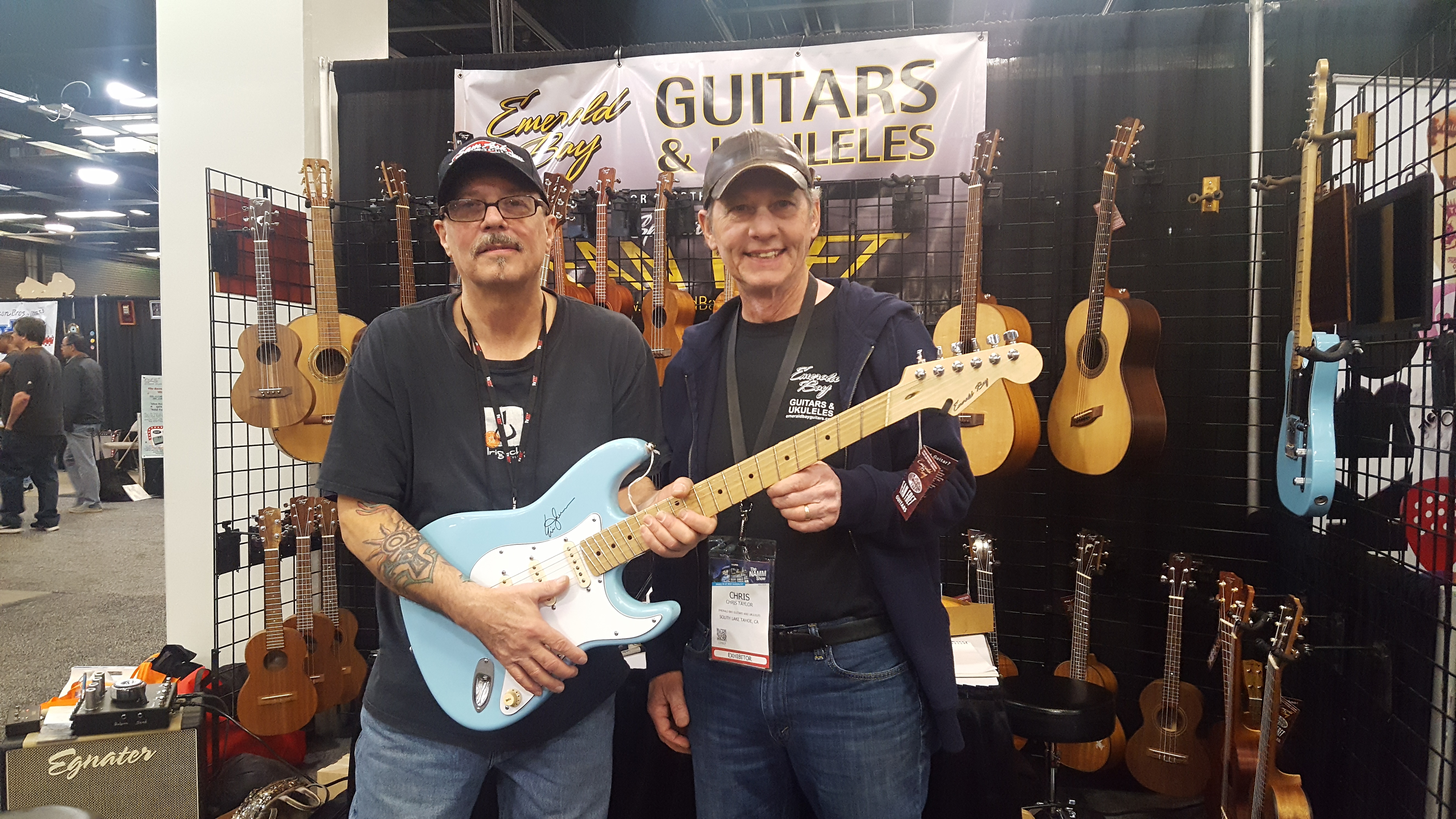
Emerald Bay Guitars and Ukuleles
Website: emeraldbayguitars.com
Facebook: @emeraldbayinstruments
It wouldn’t be The NAMM Show without guitars and ukuleles lining the show floor, and though this was Emerald Bay Guitars and Ukuleles’ first time exhibiting at NAMM, the company made quite an impact with its “guilele” display. Based in South Lake Tahoe, Calif., Emerald Bay was founded by brothers Chris and Dave Taylor. The company has plenty to offer musicians, including acoustic and electric guitars, basses and ukuleles, and it also carries a line of six-string “guileles” that are ideal for guitar players looking to learn the ukulele. It also fills custom orders. When it comes to producing ukuleles, Emerald Bay’s main objective is to ensure that the instruments have a good tone. “What’s hard to do is get a good tone out of ukuleles,” Dave Taylor said. “Because a lot of the woods that are offered — like Koa — are not really great tone woods unless you get the tolerances correct.” For this reason, the company tap tones all of its instruments. It strives to get all of its guitars and ukuleles at the right tolerances, using the woods available to achieve a good tone.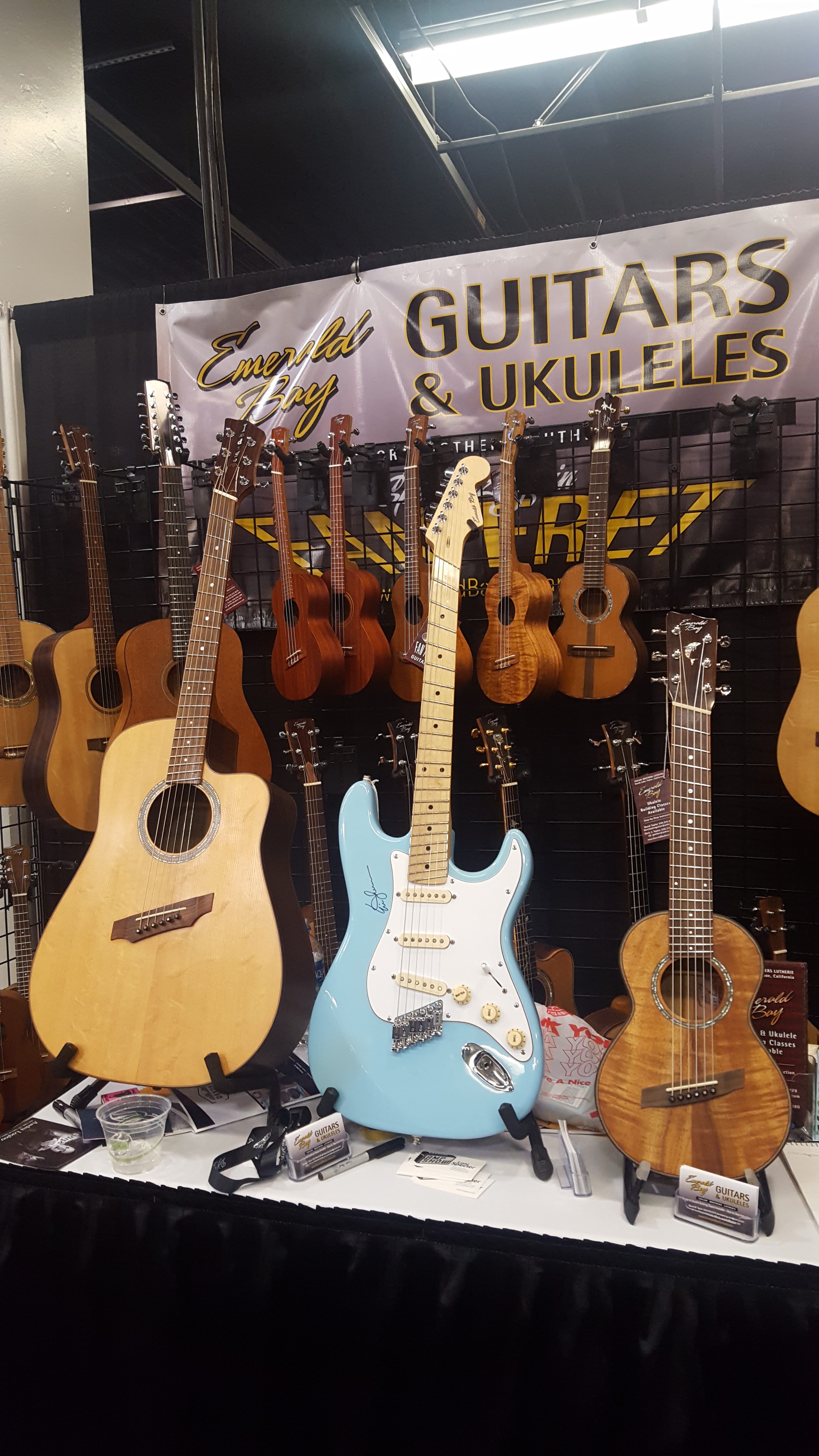
Emerald Bay also specializes in fanned frets and scalloped necks, which are popular among metal players. The company offers all of its instruments fan fretted, even the ukuleles. “The fan frets are a multi-scale instrument,” Taylor explained. “Every string has its own scale, so you get perfect intonation. You get a lot of deep, richer notes because you’ve got a longer scale, almost like a baritone on a 25 1/2-inch guitar.”
The company also hosts building classes at its shop, where visitors can learn to build their own ukuleles and guitars. Depending on visitors’ preferences and schedules, it offers 10-day seminars and two-week classes. These allow musicians to get involved in the creation process of their custom instruments.
Now that Emerald Bay has conquered its first NAMM Show, the owners are looking to make connections with people across the industry. “This is our first time, and we’ve done a lot of festivals and everything, but we just wanted to step up,” Taylor said. And Emerald Bay certainly has stepped up its game, as Taylor confirmed that the products received a positive reception during the course of the show.
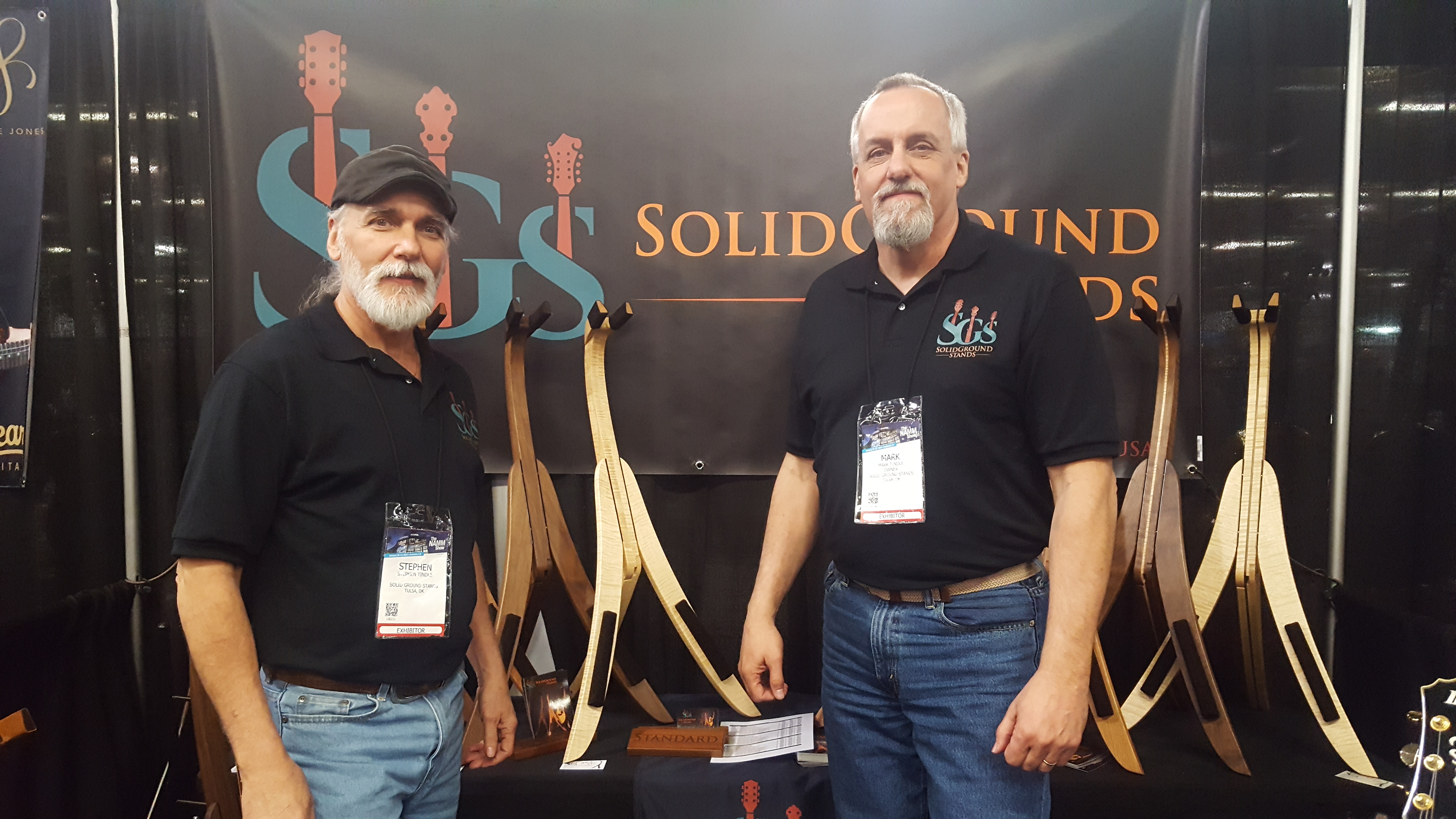
Solid Ground Stands
Website: solidgroundstands.com
Instagram: @sgstands
Stands can often be as important as the instruments that sit on them, particularly for musicians and music store owners who want their instruments to look good even when they’re not in use. Solid Ground Stands understands this, and that’s why they make high-quality guitar stands for mid- and upper-range guitars. The company uses hardwoods to build its stands, ranging from native woods like Walnut Cherry and Maple to more exotic ones like Morado and Chechen.
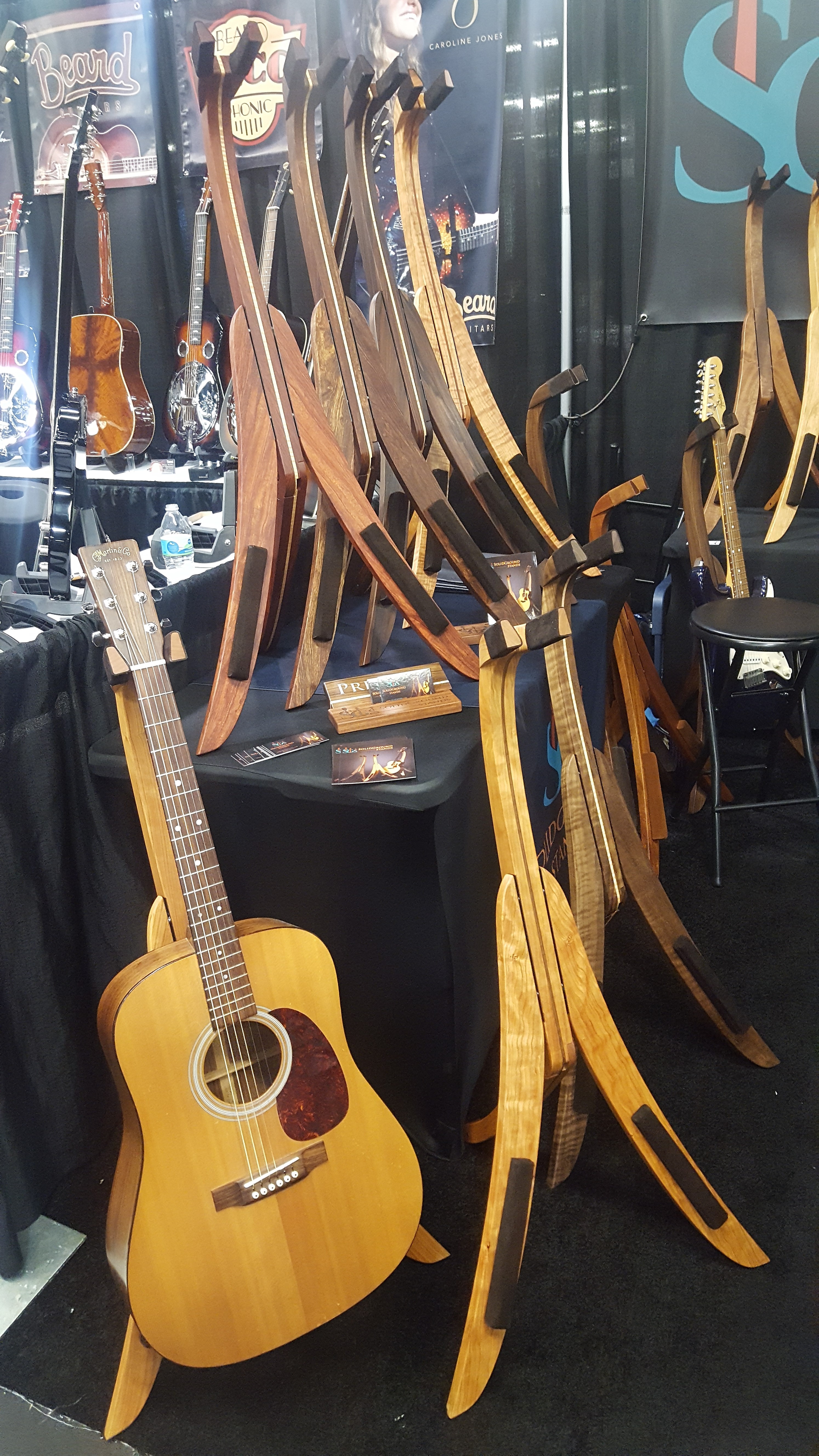 The quality is one of the most important components of Solid Ground Stands’ products, and it’s something the company is willing to spend money to achieve. “I’ve had a few people say, ‘I’ve spent less on my guitar than this stand.’ But, you know, it’s really targeted more for the mid-range and upper guitars,” said Mark Tindle, founder and designer at Solid Ground Stands. “We’ve done really well at several luthier guitar shows across the country because they’re looking for a nice, hardwood guitar stand to complement the really nice guitars that they have. Of course, it costs more to produce these than a typical $20 music store guitar stand. But they’re very secure, very stable. That’s why we feel that we’re very unique in that regard, putting all those three together — the portability, the stability and the hardwoods.”
The quality is one of the most important components of Solid Ground Stands’ products, and it’s something the company is willing to spend money to achieve. “I’ve had a few people say, ‘I’ve spent less on my guitar than this stand.’ But, you know, it’s really targeted more for the mid-range and upper guitars,” said Mark Tindle, founder and designer at Solid Ground Stands. “We’ve done really well at several luthier guitar shows across the country because they’re looking for a nice, hardwood guitar stand to complement the really nice guitars that they have. Of course, it costs more to produce these than a typical $20 music store guitar stand. But they’re very secure, very stable. That’s why we feel that we’re very unique in that regard, putting all those three together — the portability, the stability and the hardwoods.”
When it comes to portability, Solid Ground Stands produces products that can easily be transported from one performance to the next. The stands are built with functionality that allows them to fold, using rare-earth magnets built into key locations that enable the stands to snap together. “The stands will fold to a footprint of about six inches by six inches, and then the length is about 42 inches,” Tindle explained. “So, they fit comfortably in a nice little carry bag that we include with each stand. Think of it as maybe like a mic stand — about that size. And they work very easily. There’s no tools; there’s no extra hardware or pieces.”
Tindle attended The NAMM Show last year to determine whether or not Solid Ground Stands should exhibit there. “Everybody’s been saying, ‘You’ve got to go to NAMM,’” he said. “So, I visited here last year to kind of scope it out and see what it was like, and I was like, ‘Yeah, we need to be here.’” After exhibiting at this year’s show, the company is looking to establish dealers and expand beyond just selling to consumers. “We want to get them into stores,” Tindle added. “We believe there’s a strong niche market for them — and we’re excited to be here, and we’re having a great success.”
Solid Ground Stands is also planning to come out with similar products for other stringed instruments soon, starting with banjo and acoustic bass guitar stands, which will be built to accommodate the longer neck. Tindle also confirmed the company is currently developing smaller stands for ukuleles, mandolins, and even violins and violas. “Those variations will be coming up next,” he said. “Hopefully in the next few months.”


